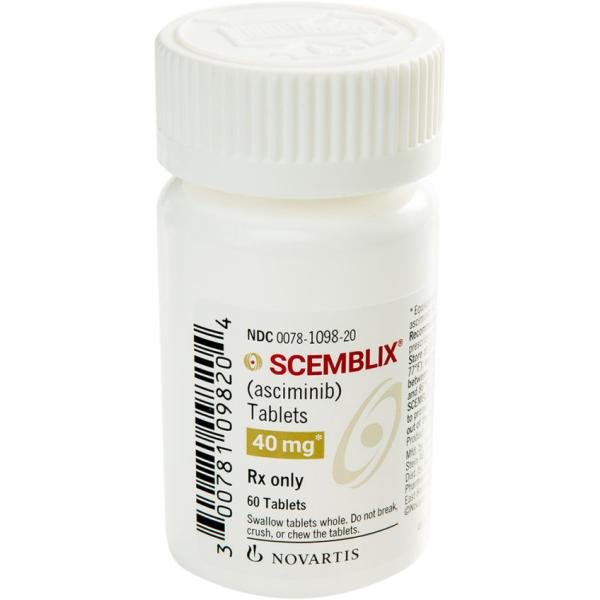Asciminib Disease Interactions
There are 3 disease interactions with asciminib.
Asciminib (applies to asciminib) cardiovascular toxicity
Major Potential Hazard, Moderate plausibility. Applicable conditions: Cardiovascular Disease
Cardiovascular toxicity has been reported with asciminib in patients with preexisting cardiovascular conditions or risk factors for cardiovascular disease. Reports of cardiovascular toxicity have included ischemia, arterial thrombotic and embolic conditions, and cardiac failure. Arrhythmia, including QTc prolongation, has been reported. Monitor patients with history of cardiovascular risk factors for cardiovascular signs and symptoms. Treat as clinically indicated. For cardiovascular toxicity, temporarily withhold, reduce dose, or permanently discontinue therapy, based on persistence of cardiovascular toxicity.
Asciminib (applies to asciminib) pancreatitis
Major Potential Hazard, Moderate plausibility.
Asciminib can cause increases in serum lipase. Patients with a previous history of pancreatitis might be at increased risk and should be monitored carefully for lipase elevations and any abdominal symptoms. Serum lipase should be monitored monthly and as clinically indicated. If lipase and amylase elevations are accompanied by abdominal symptoms, hold therapy, and rule out pancreatitis.
Asciminib (applies to asciminib) hypertension
Moderate Potential Hazard, Moderate plausibility.
The use of asciminib may cause hypertension. Blood pressure should be well-controlled prior to initiating asciminib and treated as needed with standard anti-hypertensive therapy. For persistent hypertension despite anti-hypertensive medications, temporarily withhold, reduce dose, or permanently discontinue therapy, based on the persistence of hypertension.
Switch to professional interaction data
Asciminib drug interactions
There are 735 drug interactions with asciminib.
Asciminib alcohol/food interactions
There are 2 alcohol/food interactions with asciminib.
More about asciminib
- asciminib consumer information
- Check interactions
- Compare alternatives
- Reviews (1)
- Side effects
- Dosage information
- During pregnancy
- Drug class: BCR-ABL tyrosine kinase inhibitors
- Breastfeeding
- En español
Related treatment guides
Drug Interaction Classification
| Highly clinically significant. Avoid combinations; the risk of the interaction outweighs the benefit. | |
| Moderately clinically significant. Usually avoid combinations; use it only under special circumstances. | |
| Minimally clinically significant. Minimize risk; assess risk and consider an alternative drug, take steps to circumvent the interaction risk and/or institute a monitoring plan. | |
| No interaction information available. |
See also:
Further information
Always consult your healthcare provider to ensure the information displayed on this page applies to your personal circumstances.


